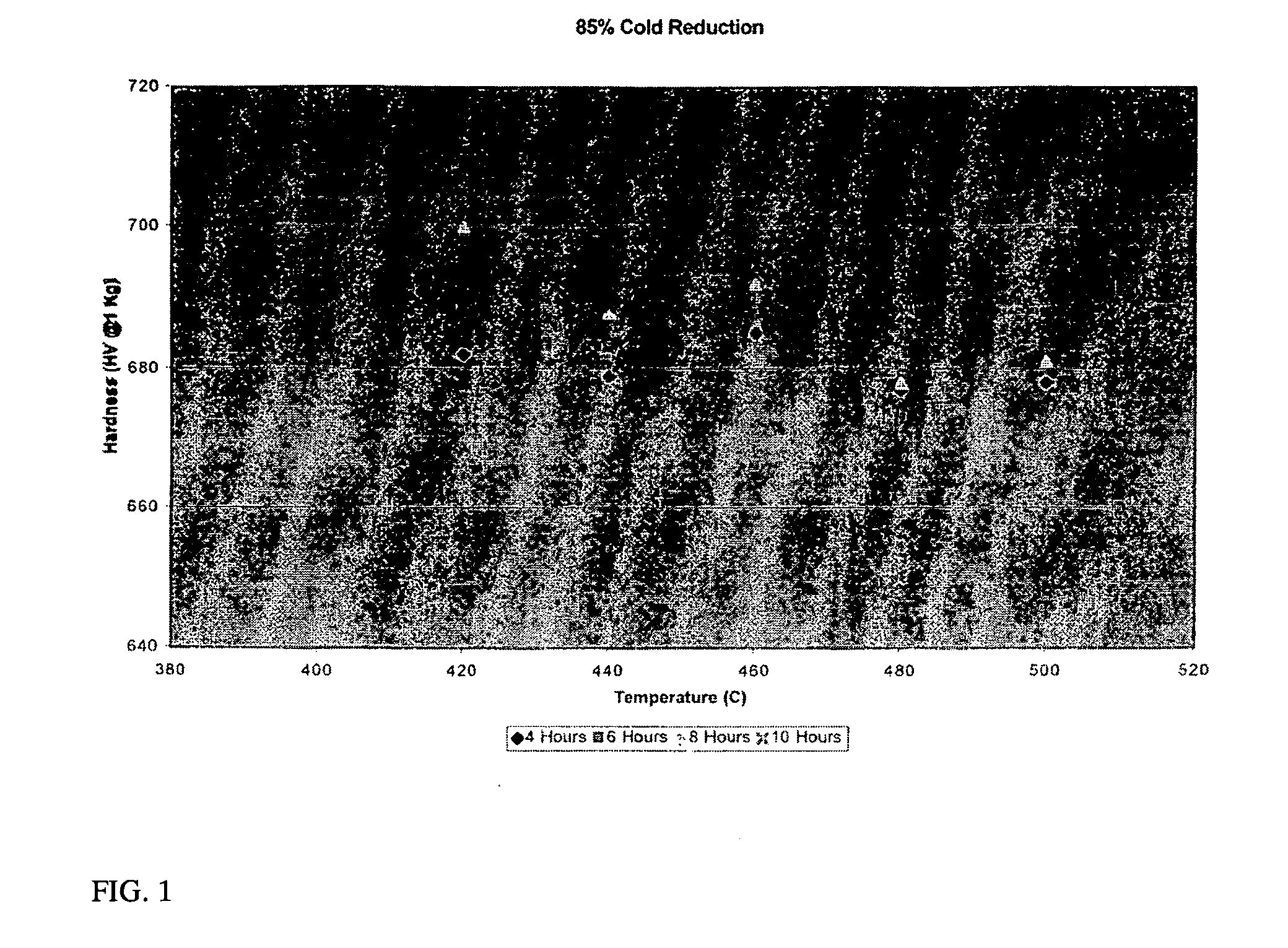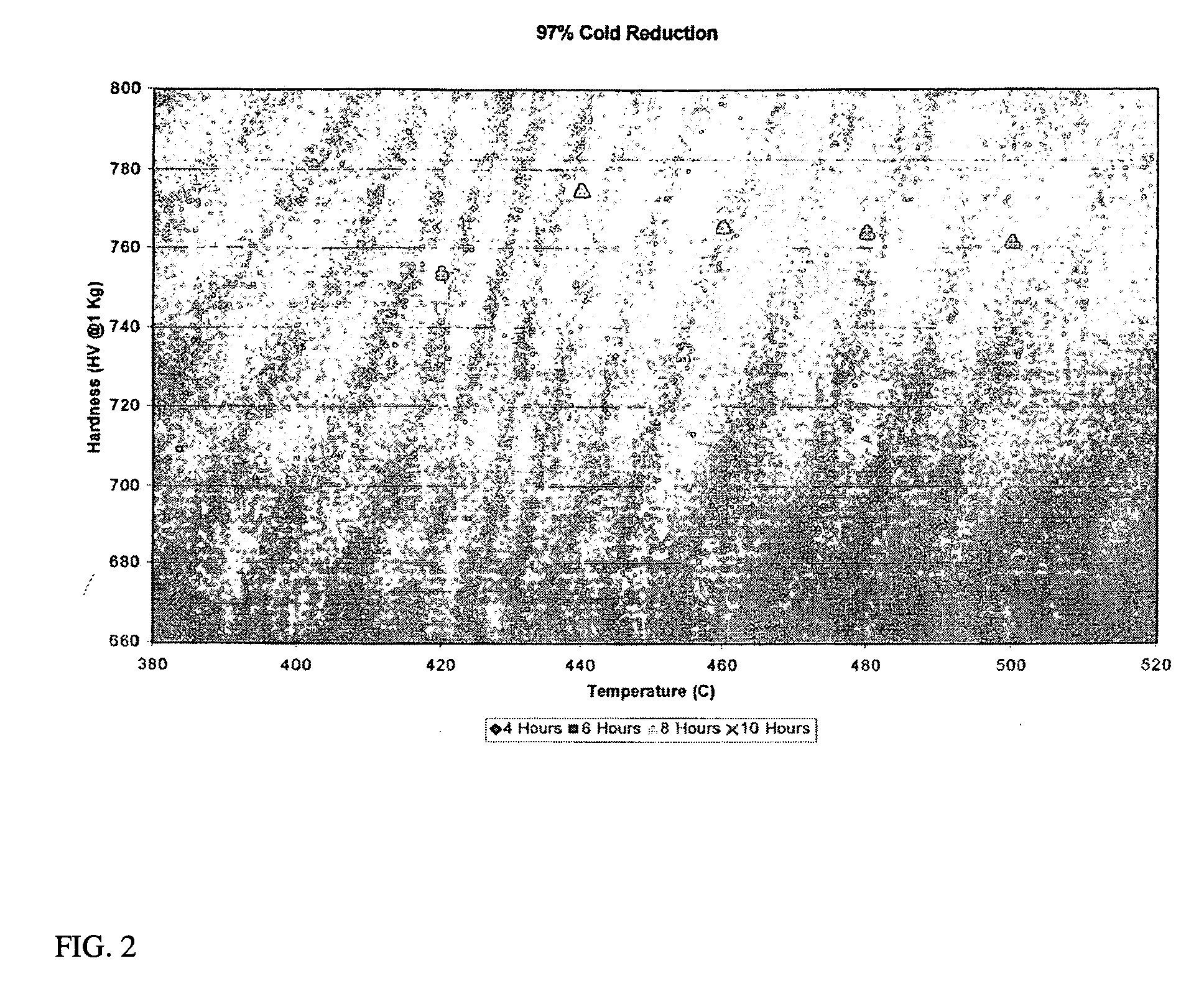Razor blades and compositions and processes for the production of razor blades
a technology of razor blades and compositions, applied in the field of razor blades, can solve the problems of reducing the amount of chromium but not eliminating it, degrading the performance of razor blades, and unappealing to users, and achieve the effect of improving corrosion resistance and improving corrosion resistan
- Summary
- Abstract
- Description
- Claims
- Application Information
AI Technical Summary
Benefits of technology
Problems solved by technology
Method used
Image
Examples
Embodiment Construction
[0015] The present invention relates to razor blades and to compositions and processes for producing razor blades for wet shave razors. The resultant razor blades have a particular composition and are produced using a particular processing sequence.
[0016] Table I presents broad and preferred compositions for use in manufacturing razor blades of the invention. The percentage values in Table I are in weight percent (wt. %) as are all other percent values in this application unless otherwise expressly indicated.
TABLE IBroad RangePreferred RangeC0.1 max 0.015 maxSi0.7 max 0.5 maxMn1.0 max0.1-0.5 maxCr10-1411.5-12.5Ni 7-118.75-9.75Mo0.5-6 3.75-4.25Ti0.4-1.40.7-1.1Cu0.5-4 1.8-2.2Al0.05-0.6 0.25-0.45Co0-9Ta0.1 maxNb0.1 maxV0.1 maxW0.1 maxFe (including normalBalanceBalanceimpurities up to 0.5)
(values shown in wt. %)
[0017] In a razor blade of the present invention having a composition as indicated in Table I, the carbon content is limited so that it is well below that used in conven...
PUM
| Property | Measurement | Unit |
|---|---|---|
| thickness | aaaaa | aaaaa |
| thickness | aaaaa | aaaaa |
| hardness | aaaaa | aaaaa |
Abstract
Description
Claims
Application Information
 Login to View More
Login to View More - R&D
- Intellectual Property
- Life Sciences
- Materials
- Tech Scout
- Unparalleled Data Quality
- Higher Quality Content
- 60% Fewer Hallucinations
Browse by: Latest US Patents, China's latest patents, Technical Efficacy Thesaurus, Application Domain, Technology Topic, Popular Technical Reports.
© 2025 PatSnap. All rights reserved.Legal|Privacy policy|Modern Slavery Act Transparency Statement|Sitemap|About US| Contact US: help@patsnap.com



